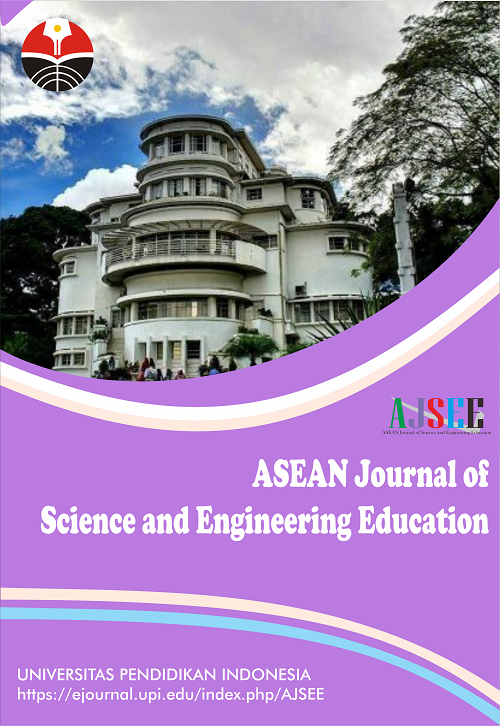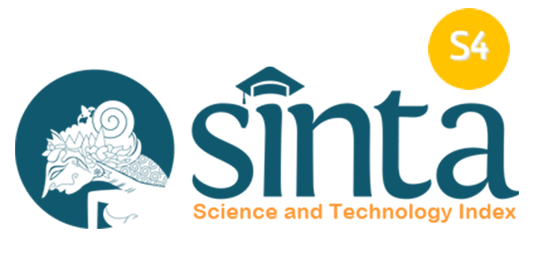Application of Scrabble Game in Improving Learning of Simple Sentence Structure on the Student with Hearing Impairment
Abstract
The purpose of this study was to analyze the application of scramble games on the learning ability to compile simple sentence structures in students with hearing impairment. Scramble Game is the learning method that was chosen to convey the material for constructing simple sentences in this study. The research method used in this study was an experimental method with a Single Subject Research (SSR) design which was conducted in three stages, namely: 1) learning in initial condition (before intervention), 2) learning in the intervention condition, and 3) learning after the intervention. The research subject is a second-grade student with hearing impairment at a special junior high school in Cirebon Regency. The Scramble Game method is prepared by making picture cards containing simple words to be arranged into coherent sentences. The results of the study show that after being given learning with the scramble game with picture word cards, the student with hearing impairment experienced increases in their ability to compose simple sentence structures. This study provides alternative learning strategies, especially for teachers who teach the student with hearing impairment.
Keywords
Full Text:
PDFReferences
Adiputra, M. R. (2021). The function of language in student interaction at school. Literasi Nusantara, 1(2), 40-50.
Al-Rowaily, M. A., AlFayez, A. I., AlJomiey, M. S., AlBadr, A. M., and Abolfotouh, M. A. (2012). Hearing impairments among Saudi preschool children. International journal of pediatric otorhinolaryngology, 76(11), 1674-1677.
Dostal, H. M., and Wolbers, K. A. (2014). Developing language and writing skills of deaf and hard of hearing students: A simultaneous approach. Literacy Research and Instruction, 53(3), 245-268.
Fitriyah, L. (2021). Effectiveness of scramble to the students’ reading comprehension. Journal of English Education and Technology, 1(04), 303-323.
Gangaiamaran, R., and Pasupathi, M. (2017). Review on use of mobile apps for language learning. International Journal of Applied Engineering Research, 12(21), 11242-11251.
Jackson, C. W. (2011). Family supports and resources for parents of children who are deaf or hard of hearing. American annals of the deaf, 156(4), 343-362.
Khaira, M., Ritonga, M., and Halim, S. (2021, June). The Effectiveness of Scrabble Game Media in Improving Learning Outcomes. In Journal of Physics: Conference Series, 1933(1), 012128.
Maisaroh, E. (2021). Indonesian sentences acquisition by a three-year-old child. Journal Medium for English Language Teaching, 4(2), 95-113.
Marsanto, M. (2021). Penerapan model pembelajaran snowball throwing untuk meningkatkan kemandirian dan prestasi belajar menghitung jarak, waktu, dan kecepatan pada siswa kelas V. Jurnal Pendidikan dan Teknologi Indonesia, 1(1), 35-44.
Moeller, M. P., Tomblin, J. B., Yoshinaga-Itano, C., Connor, C. M., and Jerger, S. (2007). Current state of knowledge: Language and literacy of children with hearing impairment. Ear and Hearing, 28(6), 740-753.
Öztürk, G., and Kalyoncu, N. (2018). The effect of cooperative learning on students’ anxiety and achievement in musical ear training lessons. Journal of Measurement and Evaluation in Education and Psychology, 9(4), 356-375.
Sari, N., and Putro, K. Z. (2021). Assistance and learning strategies for deaf children. Journal of Early Childhood Education, 1(1), 39-52.
Sugiata, I. W. (2019). Penerapan model pembelajaran team game tournament (tgt) untuk meningkatkan hasil belajar. Jurnal Pendidikan Kimia Indonesia, 2(2), 78-87.
Voinov, V. (2010). Words should be fun: Scrabble as a tool for language preservation in Tuvan and other local languages. Language Documentation and Conservation, 4, 213-230.
Zaenuri, Z., and Maemonah, M. (2021). Strategi mnemonic sebagai solusi untuk pengayaan kosa kata pada anak tunarungu di Sekolah Dasar. Jurnal Basicedu, 5(4), 1831-1840.
DOI: https://doi.org/10.17509/ajsee.v2i1.37619
Refbacks
- There are currently no refbacks.
Copyright (c) 1970 Universitas Pendidikan Indonesia

This work is licensed under a Creative Commons Attribution-ShareAlike 4.0 International License.














